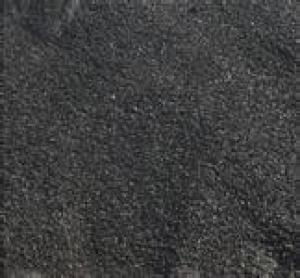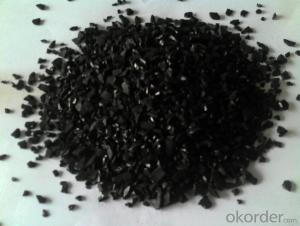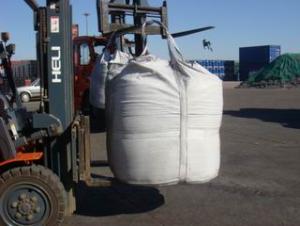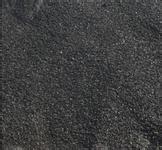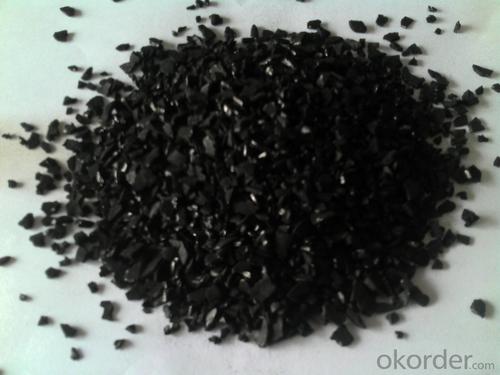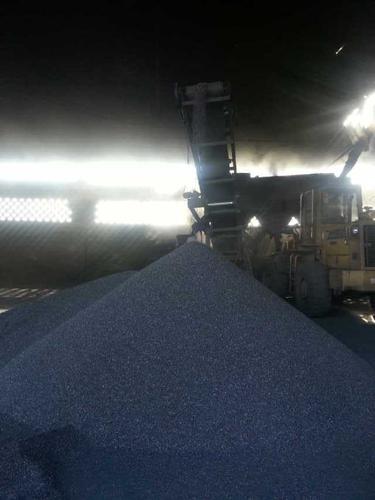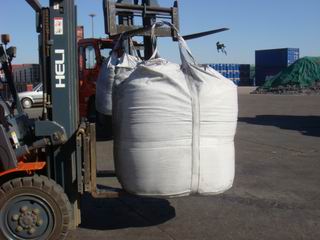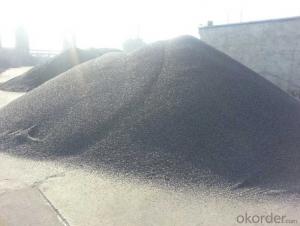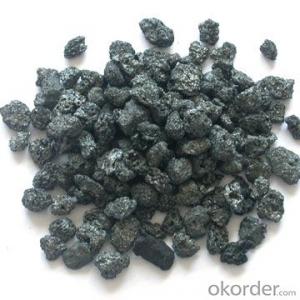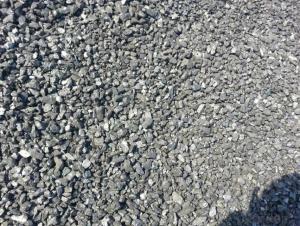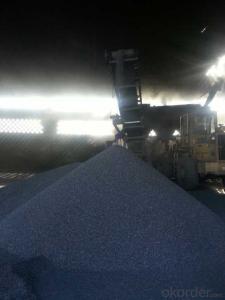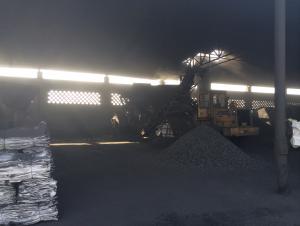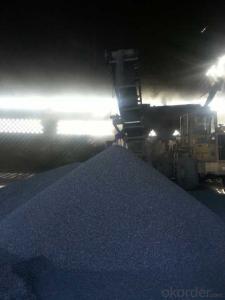Carbon Additive FC93/High F.C. CNBM Carbon Additive
- Loading Port:
- China main port
- Payment Terms:
- TT OR LC
- Min Order Qty:
- 0 m.t.
- Supply Capability:
- 100000 m.t./month
OKorder Service Pledge
OKorder Financial Service
You Might Also Like
Packaging & Delivery
| Packaging Details: | 1. carbon additive in 1 MT jumbo bag 2. carbon additive in 25kg PP bag 3. carbon additive in 50 kg woven bag 4. carbon additive in bags then put them on pallet 5.bulk in container 6.as your requirements |
| Delivery Detail: | within 10 days after receiving 30% deposit or LC |
Product Description
Carbon additive (carbon raiser) with characteristic of low ash and low sulfur is made from calcined petroleum coke, graphite petroleum coke or high quality anthracite coal . As an ideal recarburizer and intermediate reactor, it has been widely used in different industries like metallurgy, chemistry, machinery, electricity, etc.
The selection of a charging carbon is determined by the quality requirements of the steel or ferroalloy production as well as the cost and availability of carbon products. So the recarburizer is mainly used in the metallurgy to increase the content of carbon.
Specification
Carbon | Min98% |
Ash | Max0.5% |
Sulphur | Max0.05% |
V.M | Max0.5% |
Moisture | Max0.5% |
N | Max0.03% |
H | Max0.01% |
Sizes(mm) | 1-5 1-3 3-10 1-10 |
Calcined petroleum coke as carbon additive
Carbon | Min89% |
Ash | Max0.3% |
Sulphur | Max6% |
V.M | Max10% |
Moisture | Max8% |
N | Max0.03% |
H | Max0.01% |
Sizes(mm) | 1-5 3-8 5-15 10-20 |
| |
Calcined anthracite coal as carbon additive
Carbon | Min90-95% |
Ash | Max5% |
Sulphur | Max0.5% |
V.M | Max1.5% |
Moisture | Max0.5% |
N | Max0.03% |
H | Max0.01% |
Sizes(mm) | 1-5 3-8 1-3 |
Pictures of Calcined AnthraciteCoal:

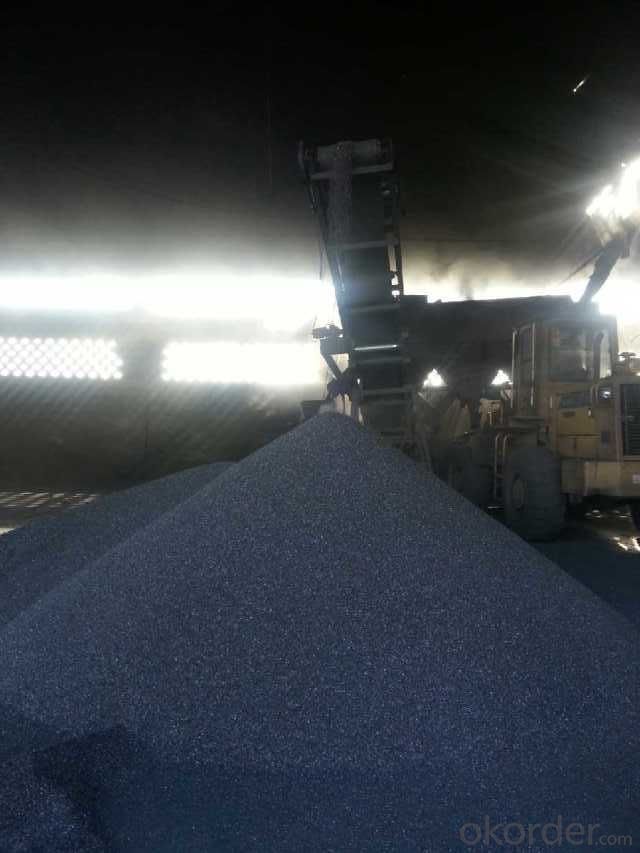
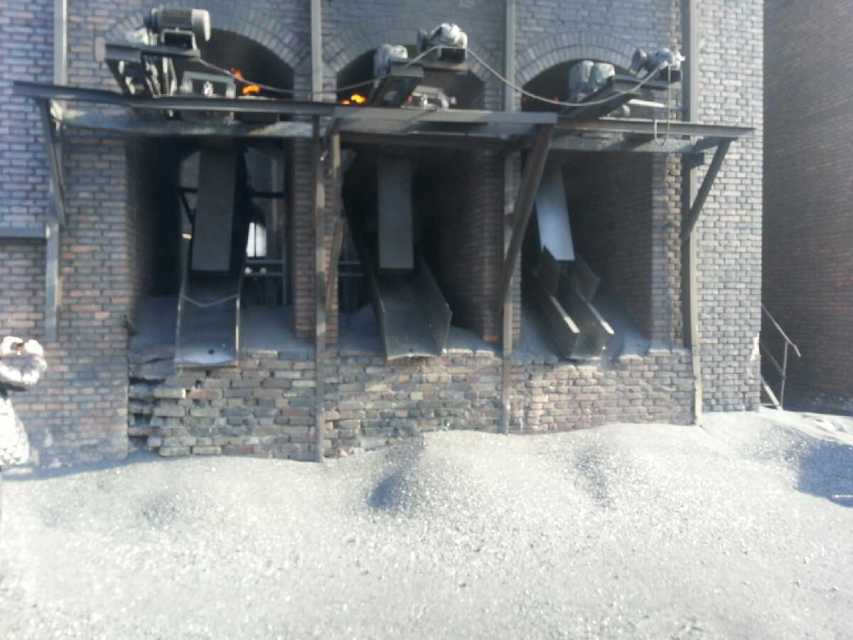
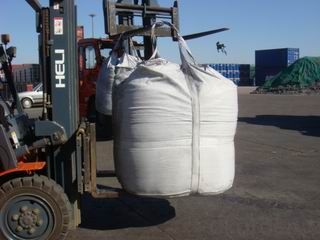
- Q: What are the different types of carbon fibers?
- Different carbon fibers have distinct characteristics and properties. Some widely used types are as follows: 1. Carbon fibers based on polyacrylonitrile (PAN): These are the most commonly utilized carbon fibers and are derived from PAN precursor materials. They provide a balanced combination of strength, stiffness, and cost-efficiency. 2. Carbon fibers based on coal tar pitch or petroleum pitch: These fibers are made from precursor materials like coal tar pitch or petroleum pitch. They typically possess higher density and thermal conductivity compared to PAN-based fibers, making them suitable for applications that require excellent thermal stability. 3. Carbon fibers based on regenerated cellulose (rayon): These fibers are produced from regenerated cellulose, commonly known as rayon. They have lower modulus and strength compared to PAN-based fibers but offer exceptional electrical conductivity. Consequently, they find extensive use in applications such as conductive textiles and electrical components. 4. Carbon fibers based on mesophase pitch: These fibers are manufactured from a precursor material called mesophase pitch, which is a liquid crystalline substance. They possess high modulus and excellent thermal conductivity, making them ideal for applications that demand high strength and heat resistance, like the aerospace and automotive industries. 5. Vapor-grown carbon fibers (VGCFs): These fibers are created through the chemical vapor deposition (CVD) method. They have a unique tubular structure and high aspect ratio, resulting in exceptional mechanical and electrical properties. VGCFs are often employed in advanced composite materials and nanotechnology applications. It is crucial to consider the specific requirements of the application, such as mechanical strength, thermal stability, electrical conductivity, or cost-effectiveness, when selecting the appropriate carbon fiber type.
- Q: How is carbon used in the electronics industry?
- Carbon is used in the electronics industry in various ways. One of the most common uses of carbon in electronics is as a key component in the production of carbon-based materials such as carbon nanotubes and graphene. These materials have unique properties that make them ideal for use in electronic devices. Carbon nanotubes, for example, are cylindrical structures made of carbon atoms arranged in a tube-like manner. They possess excellent electrical conductivity, thermal conductivity, and mechanical strength. These properties make them useful in various electronic applications such as transistors, sensors, and batteries. Carbon nanotubes can be used to create smaller and more efficient electronic components, leading to the development of smaller, faster, and more powerful electronic devices. Graphene, on the other hand, is a single layer of carbon atoms arranged in a two-dimensional lattice. It is an excellent conductor of electricity and heat, and it also has remarkable mechanical strength. These properties make graphene suitable for applications such as flexible displays, touchscreens, and energy storage devices. Graphene-based electronics have the potential to revolutionize the industry by enabling flexible and transparent devices that can be integrated into various surfaces and objects. Carbon is also utilized in the production of carbon-based resistors and electrodes. Carbon resistors are widely used in electronic circuits to control the flow of current. They provide a stable and predictable resistance, ensuring the proper functioning of electronic devices. Carbon electrodes, on the other hand, are used in batteries, fuel cells, and capacitors to facilitate the flow of electrical charge. Furthermore, carbon is crucial in the manufacturing of printed circuit boards (PCBs). PCBs are essential components in electronic devices as they provide a platform for interconnecting various electronic components. Carbon is used as a conductive ink in the fabrication of PCBs, allowing for the creation of intricate circuit patterns. In summary, carbon plays a vital role in the electronics industry. Its unique properties enable the development of advanced materials and components that enhance the performance and functionality of electronic devices. From carbon nanotubes and graphene to resistors and electrodes, carbon-based materials are shaping the future of electronics by enabling smaller, faster, and more efficient devices.
- Q: What are the impacts of carbon emissions on natural disasters?
- Natural disasters are significantly worsened by carbon emissions, leading to increased frequency and intensity. Carbon emissions have a major effect on global warming and climate change, as they cause the Earth's temperature to rise by trapping heat in the atmosphere. This temperature increase results in various weather pattern changes, which ultimately increase the occurrence and severity of natural disasters. One of the most evident consequences of carbon emissions on natural disasters is the stronger and more destructive hurricanes and tropical storms. These storms gain more energy from warmer ocean temperatures, making them more powerful. Additionally, higher temperatures lead to increased evaporation, resulting in heavier rainfall during storms and a higher risk of flooding and landslides. Carbon emissions also contribute to the melting of glaciers and polar ice caps, causing sea levels to rise. This rise in sea levels makes coastal areas more susceptible to storm surges and flooding during hurricanes and typhoons. Low-lying regions and island nations are particularly vulnerable, as they face the potential loss of their land due to rising waters. Moreover, carbon emissions play a role in the occurrence and severity of wildfires. Rising temperatures dry out vegetation, creating ideal conditions for wildfires to ignite and spread rapidly. These wildfires can devastate large areas of land, destroying ecosystems, homes, and livelihoods. Another consequence of carbon emissions on natural disasters is the disturbance of weather patterns. Climate change alters rainfall patterns, leading to longer and more severe droughts in some regions and more frequent and intense rainfall events in others. These changes in precipitation patterns can result in prolonged droughts, water scarcity, and a higher risk of wildfires in some areas, while others face increased flooding and landslides. In conclusion, carbon emissions have a profound impact on natural disasters. They contribute to global warming and climate change, intensify hurricanes, increase the risk of flooding, raise sea levels, fuel wildfires, and disrupt weather patterns. It is crucial to reduce carbon emissions and transition to clean and sustainable energy sources to mitigate these impacts and protect our planet from the devastating effects of natural disasters.
- Q: What is the structure of a diamond, a form of carbon?
- A diamond, which is a form of carbon, has a crystal lattice structure. In this arrangement, each carbon atom is covalently bonded to four other carbon atoms, forming a tetrahedral arrangement. This creates a repeating pattern and a three-dimensional network of carbon atoms. The bonds between the carbon atoms are incredibly strong, which is why diamonds are so hard and durable. The carbon atoms in a diamond are arranged in a cubic crystal system, specifically the face-centered cubic (FCC) structure. In this system, each carbon atom is surrounded by eight neighboring carbon atoms, resulting in a dense and tightly packed structure. The strong covalent bonds and compact arrangement of carbon atoms in the diamond lattice give diamonds their unique properties. These properties include exceptional hardness, high thermal conductivity, and optical brilliance.
- Q: What is the impact of carbon emissions on agriculture?
- Carbon emissions have a significant impact on agriculture, affecting both crop production and livestock farming. One of the primary consequences of increased carbon emissions is climate change, which alters weather patterns and temperatures. These changes can disrupt the delicate balance required for successful agriculture. Rising temperatures caused by carbon emissions lead to increased evaporation, which can reduce soil moisture and hinder crop growth. Droughts become more frequent and severe, leading to water scarcity and decreased crop yields. Furthermore, extreme weather events such as floods, storms, and hurricanes become more frequent, causing extensive damage to crops and farmland. Another consequence of carbon emissions is the alteration of atmospheric composition. High levels of carbon dioxide (CO2) stimulate the growth of certain weeds and invasive species, which compete with crops for resources such as sunlight, water, and nutrients. This competition can lead to reduced crop yields and lower quality produce. Additionally, carbon emissions contribute to air pollution, including ozone formation. High levels of ozone can damage plant tissues and reduce photosynthesis, limiting crop productivity. Ozone also negatively affects the health of livestock, reducing their growth rates and milk production. The impact of carbon emissions on agriculture is not limited to crop production. Livestock farming is also affected, as changes in climate and temperature can impact animal health and productivity. Heat stress becomes a significant issue, leading to reduced fertility, lower milk yields, and increased susceptibility to diseases. Livestock also need access to adequate water and nutritious feed, which can become scarce due to droughts and increased competition for resources. Overall, carbon emissions have a detrimental impact on agriculture, affecting both crop production and livestock farming. Climate change, altered weather patterns, and increased competition for resources all contribute to reduced yields, lower quality produce, and decreased livestock productivity. Addressing and mitigating carbon emissions is crucial to ensure the sustainability and resilience of the agricultural sector in the face of these challenges.
- Q: How does carbon impact the formation and intensity of hurricanes?
- The formation and intensity of hurricanes are significantly influenced by carbon, specifically carbon dioxide. The rise in atmospheric carbon dioxide levels is a result of increased carbon emissions from human activities such as burning fossil fuels, deforestation, and industrial processes. This increase in carbon dioxide contributes to global warming. Global warming is caused by the greenhouse effect and leads to higher sea surface temperatures. These warmer ocean waters provide the necessary energy and moisture for hurricanes to form and strengthen. As the atmosphere warms, it can hold more water vapor, which acts as fuel for hurricanes, making them more powerful and intense. The warming of the atmosphere also changes the conditions that affect hurricane formation. It alters the wind shear, which is the difference in wind speed and direction at different altitudes. Low wind shear is favorable for hurricane development as it allows the storm to organize and gain strength. However, global warming can disrupt this balance and create unfavorable wind shear patterns, hindering hurricane formation. Additionally, the increased levels of carbon dioxide in the atmosphere contribute to ocean acidification. When carbon dioxide dissolves in seawater, it forms carbonic acid, which lowers the pH of the ocean. Acidic waters have detrimental effects on marine life, including coral reefs. Coral reefs act as natural barriers against storm surges during hurricanes, but their degradation weakens their ability to protect coastal communities. In conclusion, carbon emissions and the subsequent increase in carbon dioxide levels have a significant impact on the formation and intensity of hurricanes. The warming of the atmosphere and ocean, along with changes in wind shear patterns, create conditions that favor the development and intensification of hurricanes. Additionally, ocean acidification resulting from excessive carbon dioxide levels weakens natural defenses against storm surges. It is essential to address carbon emissions and reduce our carbon footprint to mitigate the potential consequences of climate change and its impact on hurricanes.
- Q: How does carbon dioxide affect waste management processes?
- Carbon dioxide can affect waste management processes by contributing to the greenhouse effect and climate change. Increased levels of carbon dioxide in the atmosphere can lead to higher temperatures, which can impact waste decomposition rates, emission of greenhouse gases from landfills, and the overall efficiency of waste treatment technologies. Additionally, carbon dioxide emissions from waste incineration can contribute to the overall carbon footprint of waste management processes.
- Q: Carbon steel with carbon steel, carbon steel yuan yuan is the same? The trouble to know the answer urgently
- Not the same! Simply say: the high quality carbon steel or carbon steel. Specifically speaking is the carbon content of less than 0.08%. and carbon steel compared to its quality is excellent, there are strict requirements to ensure the chemical composition and mechanical properties, phosphorus and sulfur are high quality carbon steel eliminating lower impurity content.
- Q: What does "carbon neutrality" mean?
- Carbon neutral (Carbon, Neutral)The new Oxford English dictionary published in 2006 annual vocabulary "Carbon Neutral", Chinese translated as "carbon neutral", global warming and carbon dioxide emissions are closely related, "carbon neutral" refers to the total emissions of carbon dioxide is calculated, and then put these emissions by planting digest compensation, do not give the earth additional greenhouse gas emissions (mainly including carbon dioxide, methane etc.) burden, achieve the purpose of environmental protection.
- Q: How do you make your own carbon fiber bar?Know. ID is how to make? Don't copy anything that has nothing to do with it
- 4. application development, at present, various applications for carbon fiber annual demand ratio is as follows: sports applications of about 30%, aviation applications for 10%, industrial applications for 60%. Three important applications in sports are the golf club, fishing rod and tennis racket frame. At present, it is estimated that the annual output of big bat is 34 million. According to the national geographic classification, these big clubs are mainly made in the United States, China, Japan and Taipei, China, and the United States and Japan are the main consumer of golf clubs, accounting for more than 80%. 40% of the carbon fiber balls in the world are made from carbon fiber of TORAY. Carbon fiber fishing rods around the world produce about 20 million pairs a year, which means this application has a steady demand for carbon fiber. The market capacity of tennis racket frames is about 6 million pairs per year. Other sports applications include hockey sticks, ski sticks, archery, and bicycles, while carbon fiber is also used in rowing, rowing, surfing, and other marine sports. In 1992, the airline's demand for carbon fiber began to decline, mainly due to the decline of the commercial aircraft industry, but it recovered rapidly in the early 1995. The main reason for the recovery is that the overall efficiency of the production has been improved, but also began to fully produce Boeing 777 aircraft, TORAY carbon fiber has been used
Send your message to us
Carbon Additive FC93/High F.C. CNBM Carbon Additive
- Loading Port:
- China main port
- Payment Terms:
- TT OR LC
- Min Order Qty:
- 0 m.t.
- Supply Capability:
- 100000 m.t./month
OKorder Service Pledge
OKorder Financial Service
Similar products
Hot products
Hot Searches
